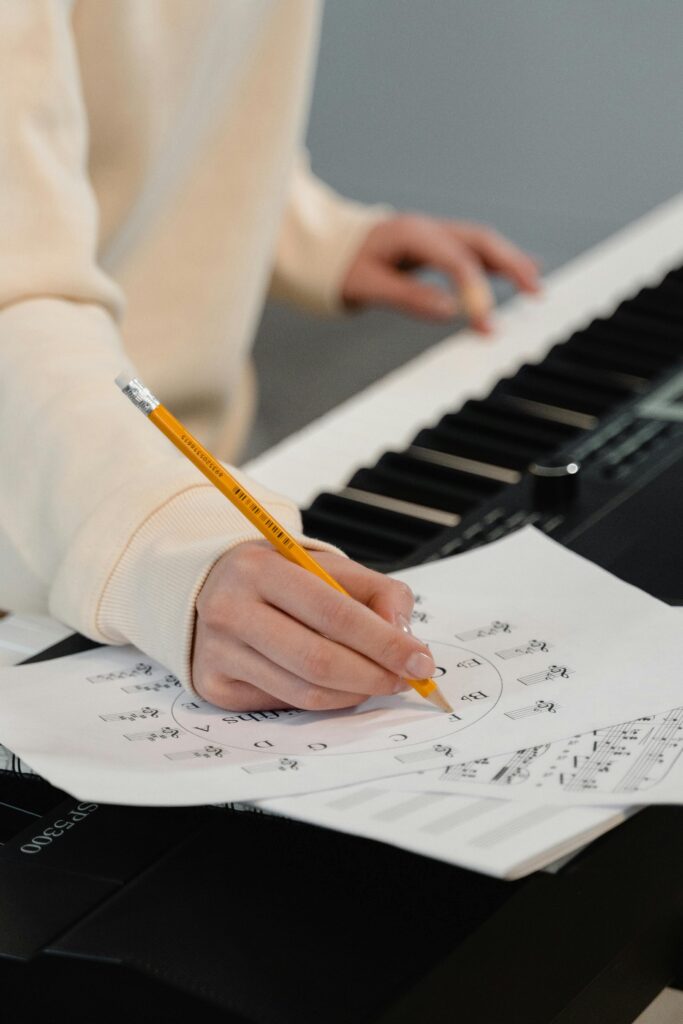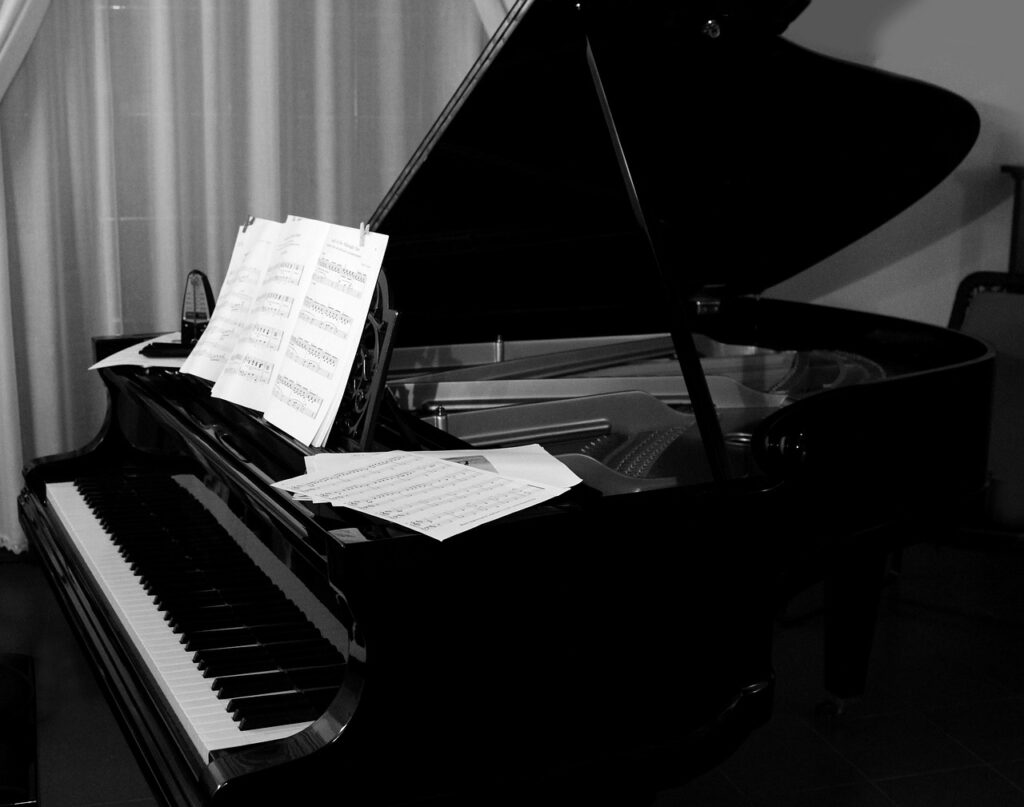Learning to play the piano is a journey filled with creativity, discipline, and moments of joy. One of the keys to success is establishing a consistent and effective practice routine. Whether you’re a beginner or an advanced player, a structured daily practice routine can help you progress faster, stay motivated, and enjoy the process of mastering your craft.
In this guide, we’ll break down the components of an optimal practice routine, provide tips for maintaining consistency, and address common obstacles pianists face. Let’s dive in!
Why Do You Need a Daily Practice Routine?
A daily practice routine is like a roadmap—it keeps you focused, organized, and ensures you’re making steady progress. Here’s why it’s essential:
- Builds Muscle Memory: Regular practice reinforces proper finger placement and movement.
- Enhances Discipline: Consistency creates a habit that becomes second nature.
- Reduces Frustration: Clear goals help avoid aimless playing and wasted time.
- Tracks Progress: Structured sessions make it easy to measure improvement.
The Anatomy of an Effective Piano Practice Routine
1. Warm-Up (5–10 minutes)
Begin your session by warming up your hands and fingers. This prepares your muscles and mind for focused playing.
- What to Do:
- Play scales (major and minor) at a comfortable tempo.
- Practice arpeggios and chord inversions.
- Try simple finger exercises, such as Hanon or Czerny, to improve dexterity.
- Why It’s Important: Warming up prevents injury, improves finger strength, and sets the tone for productive practice.
2. Technical Exercises (10–15 minutes)
Dedicate time to developing your technique, as it’s the foundation of all piano playing.
- What to Focus On:
- Finger independence exercises.
- Speed drills (start slow, gradually increase tempo).
- Practice pieces with technical challenges, such as fast passages or tricky rhythms.
- Pro Tip: Use a metronome to ensure consistent timing and precision.

3. Repertoire Building (20–30 minutes)
This is where the magic happens—playing the pieces you love or need to learn. Divide this time into two segments:
- Learning New Pieces: Break the piece into manageable sections. Focus on one section at a time, playing slowly and correctly before increasing speed.
- Polishing Current Pieces: Work on dynamics, articulation, and expression to bring life to the music.
4. Music Theory and Sight-Reading (10–15 minutes)
These are often overlooked but are crucial for becoming a well-rounded pianist.
- What to Do:
- Practice reading sheet music you’ve never played before.
- Study chord progressions, scales, and intervals.
- Analyze your pieces to understand their structure.
- Why It’s Important: Understanding theory enhances your ability to interpret and perform music authentically.
5. Improvisation or Fun Time (10 minutes)
End your session with something enjoyable and creative.
- Ideas to Try:
- Improvise melodies over simple chord progressions.
- Play a favorite song by ear.
- Experiment with new genres or styles.
- Benefits: This keeps practice exciting and allows you to explore your unique musical voice.
Tips for Maintaining Consistency
- Set a Fixed Time: Choose a time of day that works best for your schedule, whether it’s morning, afternoon, or evening. Consistency reinforces habit formation.
- Create a Dedicated Practice Space: Set up a quiet, comfortable area with your piano, a metronome, and any other tools you need.
- Keep Sessions Manageable: It’s better to practice for 30 focused minutes daily than to cram in sporadic two-hour sessions.
- Use a Practice Journal: Log your practice goals, progress, and any challenges. Reviewing your notes can be incredibly motivating.
- Reward Yourself: Celebrate milestones, like learning a new piece or improving your sight-reading. Treat yourself to something special, like a new sheet music book or a favorite snack.
Overcoming Common Challenges
Learning any instrument comes with its own set of ups and downs. Whether you’re just starting out or have been playing for a while, it’s completely normal to face moments of frustration or discouragement. The key is to recognize these challenges for what they are—temporary roadblocks—and to equip yourself with strategies to move past them. Here are some of the most common obstacles pianists face and how to overcome them:
“I Don’t Have Enough Time.”
This is perhaps the most frequent excuse—and also one of the easiest to tackle. You don’t need hours each day to make progress. Even 10 to 15 minutes of focused, distraction-free practice can lead to noticeable improvements over time. The key lies in consistency rather than duration.
If your day is packed, try breaking your practice into small chunks:
- 5 minutes of warm-up in the morning
- 5 minutes of scales or technique after work
- 5 minutes of repertoire or improvisation before bed
Think of it like brushing your teeth—something small but important you do daily, no matter what.
“I’m Not Seeing Progress.”
It’s easy to feel stuck when improvement isn’t immediately visible. But remember, musical growth often happens gradually and beneath the surface. Just because you don’t notice a change day-to-day doesn’t mean you’re not getting better.
One powerful tool is to record yourself weekly. What may seem like a plateau can actually be a period of slow but meaningful development. Listening back after a few weeks will often reveal:
- Better timing and rhythm
- More confident dynamics
- Cleaner transitions between notes or chords
Celebrate small wins—those are the building blocks of long-term progress.
“I Get Bored.”
Boredom usually signals that it’s time to refresh your approach. Repeating the same scales or pieces can become a chore if you’re not mentally engaged. Try the following to reignite your interest:
- Explore a new genre: Jazz, lo-fi, film scores, or even video game music
- Improvise: Create your own melodies or chord progressions
- Learn by ear: Challenge yourself with a favorite tune instead of sheet music
- Collaborate: Join an online challenge or play along with backing tracks
Adding variety to your routine can make practice sessions something you actually look forward to.

A Sample Daily Practice Schedule
Here’s an example routine for a 60-minute practice session:
- Warm-Up: Scales and arpeggios – 10 minutes.
- Technical Exercises: Hanon drills – 10 minutes.
- Repertoire Building: Learn one new section, then polish an old piece – 30 minutes.
- Theory/Sight-Reading: Read new sheet music – 10 minutes.
If you only have 30 minutes, adjust accordingly by shortening each segment.
Conclusion
Creating a daily practice routine for piano is one of the most effective ways to unlock your potential as a pianist. With structure, consistency, and passion, you’ll be amazed at how quickly you improve. Remember, the journey of learning piano is as rewarding as the destination. Stay disciplined, embrace the process, and, most importantly, enjoy making music!
Now it’s time to put this plan into action—start today and watch your piano skills soar! 🎹



